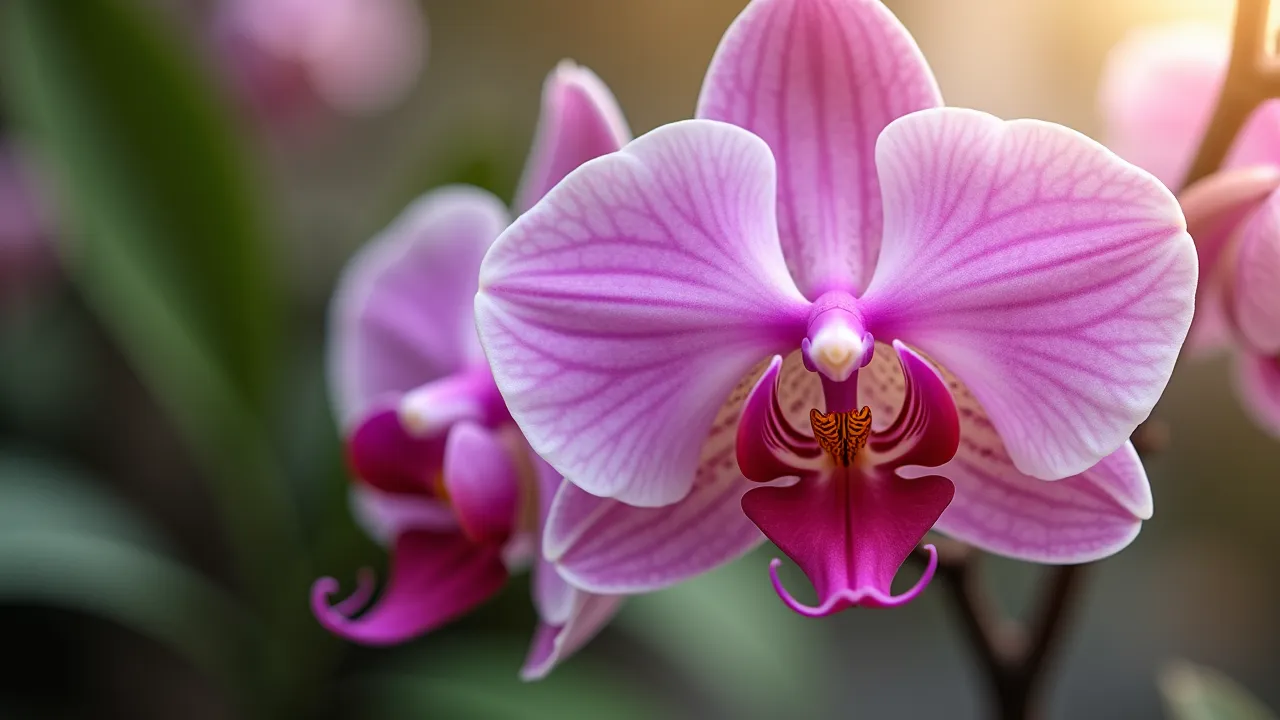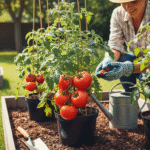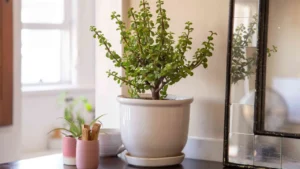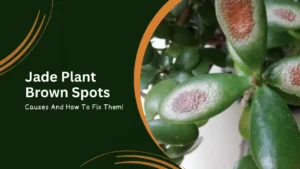Welcome, fellow garden enthusiasts! For over twenty years, I’ve had the joy and privilege of nurturing thousands of plants, but few capture my heart quite like the orchid. Their exquisite beauty and undeniable elegance make them a treasured addition to any home.
Orchids aren’t just plants; they are living sculptures—a testament to nature’s artistry. From their velvety petals to their complex structures, they symbolize love, luxury, and strength. Whether you received one as a thoughtful gift or picked one out for its captivating allure, learning how to care for an orchid plant is the first step in enjoying their stunning blooms year after year.
Don’t let their exotic reputation fool you. While they might seem demanding, with a little know-how—the same practical tips and tricks I’ve refined over decades of growing orchids indoors—you’ll find they are surprisingly rewarding. Get ready to transform your orchid from a temporary guest into a long-term, flourishing member of your indoor garden!
Table of Contents
Orchid Plant Overview: An Exotic Family
Orchids, belonging to the largest plant family, Orchidaceae, are truly fascinating. They’ve adapted to almost every environment on Earth, which is why there’s an incredible diversity in their appearance and flowering patterns. Many of the orchids we grow indoors are epiphytes, meaning they naturally grow on other trees in their native tropical homes, drawing moisture and nutrients from the air and rain, not the soil.
This unique lifestyle is key to understanding orchid plant care tips.
The Big Three of Indoor Orchids
While there are over 30,000 species, you’re most likely to encounter these popular types:
- Phalaenopsis (Moth Orchid): The quintessential beginner orchid. Known for its arching spikes of flat, moth-like flowers. It’s forgiving and blooms for months, making it the top choice for growing orchids indoors.
- Dendrobium: Highly diverse, ranging from compact to cane-like growth. They offer a cascade of delicate flowers and are slightly more light-hungry than Phalaenopsis.
- Cattleya (Queen of Orchids): Famous for their large, showy, and often fragrant blooms, they are the classic “corsage flower.” They require more light to flower but are deeply rewarding.
Orchid Plant Quick Care
As a foundation for your orchid plant care tips, here is a quick, consolidated guide to the most common indoor varieties.
| Scientific Name | Common Name | Native Region | Light Requirements | Watering Needs | Propagation | Toxicity | Growth Rate | Ideal Temperature |
| Phalaenopsis spp. | Moth Orchid | Southeast Asia | Bright, Indirect | Once a week (or when media is dry) | Keiki (Pups) | Non-Toxic | Medium | 65∘F–85∘F |
| Dendrobium spp. | Cane Orchid | Asia, Australia | Bright, Filtered Sun | Allow to dry slightly between watering | Keiki, Division | Non-Toxic | Medium | 60∘F–75∘F |
| Cattleya spp. | Corsage Orchid | Central/South America | High, Bright Indirect | Allow to dry completely between watering | Division | Non-Toxic | Medium | 60∘F–80∘F |
Orchid Plant Requirements
To truly understand how to nurture these beauties, let’s look at their structural needs.
| Requirement | Specification |
|---|---|
| Hardiness | Tender (Best grown indoors) |
| Climate Zones | Varies, typically suitable for zones 10–12 outdoors |
| Plant Type | Epiphyte (grows on trees) / Lithophyte (grows on rocks) |
| Plant Family | Orchidaceae |
| Plant Genus | Varies (e.g., Phalaenopsis, Dendrobium, Cattleya) |
| Season of Interest | Year-round (Blooms often last for months) |
| Height | 6″–36″ (Highly dependent on species and variety) |
| Spread | 6″–18″ (Varies by growth habit) |
| Spacing | Keep pots slightly separated for optimal air flow |
| Depth | Grow above media level (roots need air exposure) |
| Maintenance | Medium (Requires consistent environmental control) |
| Soil Type | Specialized Orchid Bark Mix, Sphagnum Moss |
| Soil pH | 5.5–6.5 (Slightly Acidic) |
| Soil Drainage | Excellent and absolutely fast-draining is mandatory |
How to Care for an Orchid Plant: My Decades-Tested Secrets
This is where the real experience comes into play. Forget complicated rules; these are the practical methods that have kept my orchids blooming beautifully for years. Mastering these five pillars of care will guarantee your success in growing orchids indoors.
Orchid Plant Light Requirements
Getting the light right is perhaps the single most important factor for re-blooming. Remember, the majority of indoor orchids are tropical, growing under a rainforest canopy. They want bright, indirect, or filtered light, not harsh, direct sun.
My Expert Insight: Think of it like a sunny day under a sheer curtain—bright, but gently diffused.
- Best Location: An east-facing window is ideal. A south or west-facing window works, but you must use a sheer curtain to filter the intense afternoon sun, which will scorch the leaves in minutes (a common beginner mistake!).
- The Leaf Test (Pro Tip): Healthy orchid leaves should be a vibrant, olive-green.
- Too Much Light: Leaves turn yellow-green or reddish, with burnt, brown spots.
- Too Little Light: Leaves are deep, dark green, and the plant will refuse to flower. If you’re asking, “Why isn’t my orchid blooming?”—light is the usual suspect!
🌿 Pro Gardener Tip: Turn your orchid pot 1/4 turn every week. This ensures the leaves and flower spike grow straight and symmetrically, preventing the plant from leaning dramatically towards the light source.
Orchid Plant Watering: The “Soak and Dry” Method
This is where most beginners make their first and last mistake: overwatering. Since most indoor orchids are epiphytes, they are adapted to rapid drying. Their thick roots need air!
My Expert Insight: I always tell people to water the plant, not the calendar.
- The Root Check: The easiest way to know when to water is to look at the roots. In a clear plastic pot, healthy roots are plump and green when wet, and they turn silvery-white or gray when dry and ready for water.
- The Soak: Place the entire pot in a sink or basin. Pour room-temperature water over the top until it runs out the drainage holes, or better yet, let the pot soak for 10–15 minutes. This rehydrates the bark and moss fully.
- The Drain: This step is crucial! Lift the pot and let it drain completely. Never let an orchid sit in standing water. Root rot is the fast track to failure when watering orchids.
🌿 Pro Gardener Tip: Use the weight test. A freshly watered orchid pot is significantly heavier than a dry one. Lift it regularly to feel the difference. Once it feels light as a feather, it’s time to water!
Orchid Plant Soil: The Media, Not the Dirt
Orchids don’t grow in traditional “potting soil” or dirt. They need an airy, fast-draining medium that mimics their natural environment.
- Best Soil Type (Media): Use a specialized orchid mix, typically composed of large chunks of fir bark, sphagnum moss, charcoal, and perlite.
- Why It Matters: The coarse texture ensures vital airflow to the roots. When the bark breaks down into smaller particles (usually after 1–2 years), it retains too much water, which is your cue to repottiing orchid plant.
Best Pot for Orchid Plant
You’ll notice most orchids come in a clear plastic pot nestled inside a decorative cachepot. This isn’t just for packaging—it’s essential for care!
- Clear Plastic Pot: This allows you to inspect the roots (the silver-gray to green color change is your watering guide) and monitor the condition of the potting media.
- Excellent Drainage: The plastic pot must have ample drainage holes. Water retention is your enemy.
- Cachepot: The outer decorative pot is simply to collect excess water and provide stability, but ensure the plastic pot is lifted slightly out of the water collected in the bottom of the cachepot.
Repotting Orchid Plant: A Breath of Fresh Air
You should repot a Phalaenopsis orchid every 1 to 2 years, even if it hasn’t outgrown its pot.
When to Repot:
- When the media (bark/moss) starts to break down and look muddy.
- When the orchid has finished blooming, usually in the spring or summer.
- When a significant number of roots are rotten, shriveled, or are dramatically growing over the rim.
The Repotting Process:
- Gently remove the orchid. Wash the roots under warm water.
- Using sterilized shears, cut away any dead or rotten roots. Healthy roots are firm; rotten ones are soft, mushy, or hollow.
- Place the orchid in a new or sterilized pot that is typically the same size or only slightly larger than the old one. Orchids flower better when slightly root-bound.
- Carefully work the fresh orchid mix around the roots. Do not pack the mix down—let it settle naturally to maintain air pockets.
🌿 Pro Gardener Tip: Always use sterilized tools (wipe with rubbing alcohol) when pruning or repotting. This prevents the transfer of fungal or bacterial diseases from one plant to another.
Orchid Plant Temperature
Orchids are sensitive to sudden temperature shifts, but they thrive in the same temperatures we find comfortable indoors.
- Ideal Range: Most popular indoor orchids prefer temperatures between 65∘F and 80∘F during the day and a slight drop of about 10∘F at night.
- The Re-Blooming Secret: A drop in temperature (a night temperature of 55∘F to 60∘F) for a few weeks in the fall is often the trigger a Phalaenopsis needs to produce a new flower spike.
Orchid Plant Humidity Requirement
In their native habitat, humidity is high. Indoors, our dry, heated, or air-conditioned air can be a stressor.
- Target Humidity: 40% to 70% is ideal for growing orchids indoors.
- How to Increase Humidity:
- Pebble Trays: Place the potted orchid on a shallow tray filled with pebbles and water. Ensure the bottom of the pot never touches the water, as this will lead to root rot. As the water evaporates, it raises the micro-humidity around the plant.
- Grouping: Grouping your orchids and other houseplants together helps to create a slightly more humid microclimate.
🌿 Pro Gardener Tip: Never mist the leaves, especially not the crown (the center where new leaves emerge). Water sitting in the crown is a major cause of fatal crown rot.
Orchid Plant Pruning
Pruning is simple and primarily involves removing spent blooms.
- After Flowering: Once all the flowers have dropped, you have two options for the flower spike on a Phalaenopsis:
- Cut Low: Cut the spike back all the way to the base of the plant. This encourages the plant to put energy into growing new leaves and roots, leading to a stronger, better bloom next season. (My preferred method).
- Cut Above a Node: Cut the spike just above the second or third “node” (a small, triangular bump) from the base. The plant might produce a secondary bloom from this node, but the flowers will often be smaller and less impressive.
Orchid Plant Fertilizer
Orchids are light feeders. Think of it as a constant, low-level meal, not a feast.
- The “Weakly, Weekly” Rule: Use a balanced orchid fertilizer (like 20-20-20 or similar) diluted to 1/4 to 1/2 strength every time you water during the active growing season (spring and summer).
- Common Mistake: Applying full-strength fertilizer causes root burn and salt build-up in the media. Flush the media with plain water once a month to wash away any salt residue.
Orchid Plant Pests and Diseases
Even expert gardeners deal with pests. Early detection is key!
- Pests to Watch For:
- Mealybugs: Look like small, white, cottony masses, often hidden in leaf crevices.
- Scale: Small, brown, immobile bumps on leaves and stems.
- Treatment: Isolate the plant immediately. Use a cotton swab dipped in rubbing alcohol to manually remove mealybugs and scale. For larger infestations, use horticultural oil or neem oil spray.
- Diseases: The most common disease is root rot, caused by overwatering orchids. The solution is to repot into fresh, dry media and improve your watering habits.
Conclusion: Nurture Your Orchid, Nurture Your Peace
Caring for an orchid plant is a journey of patience and observation. By focusing on the essential needs—bright, indirect light, the “soak and dry” watering method, and an airy mix—you’ll create an environment where these stunning plants can thrive.
Don’t be intimidated by the phrase “how to care for an orchid plant.” Use the experience-backed knowledge shared here to guide you. Every new leaf, every plump root, and certainly every re-bloom is a badge of honor.
Orchids bring an unparalleled sense of elegance and peace into your home. Nurture them with confidence, and they will reward you with their extraordinary beauty for many seasons to come. Happy growing!











